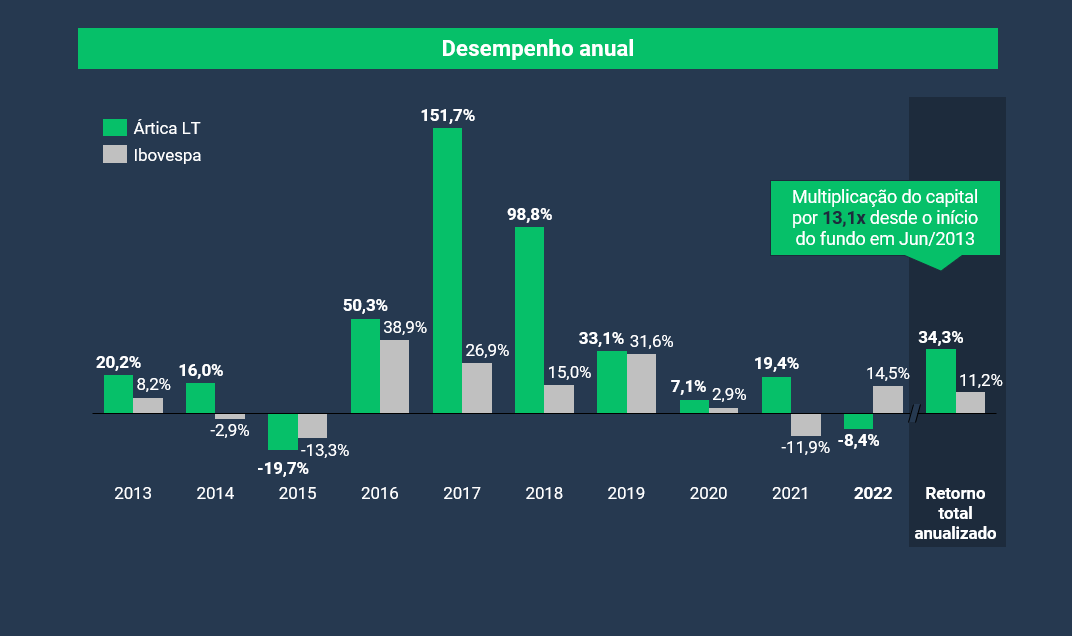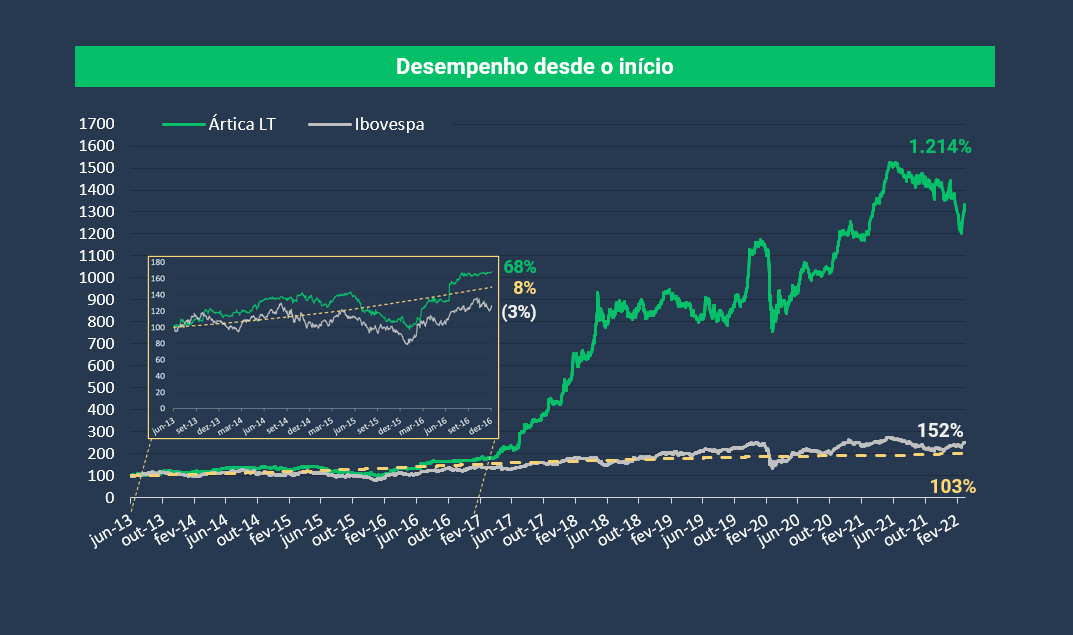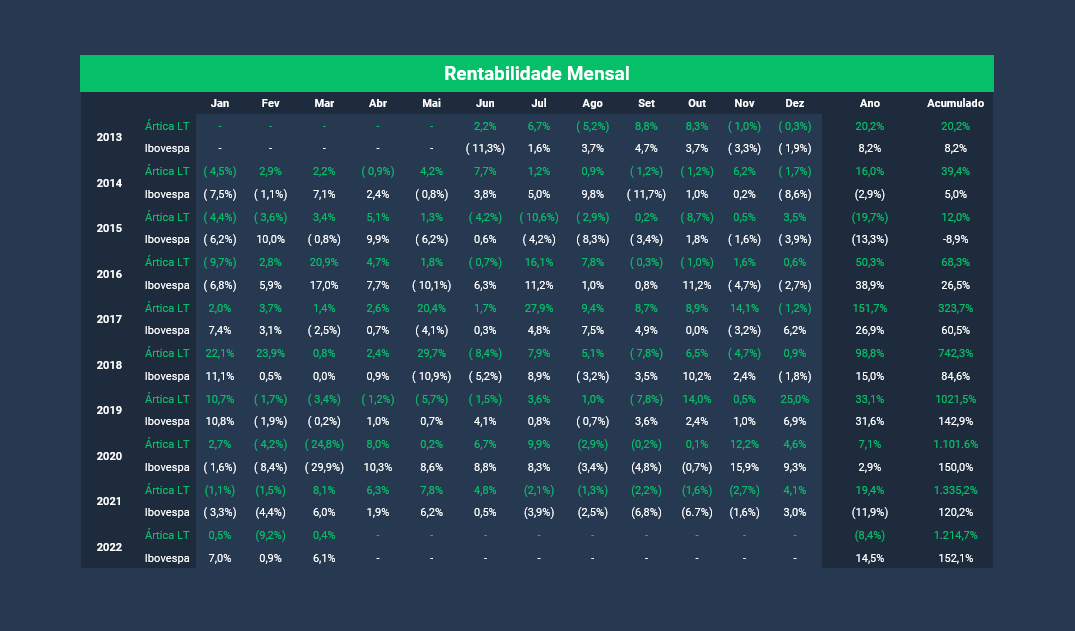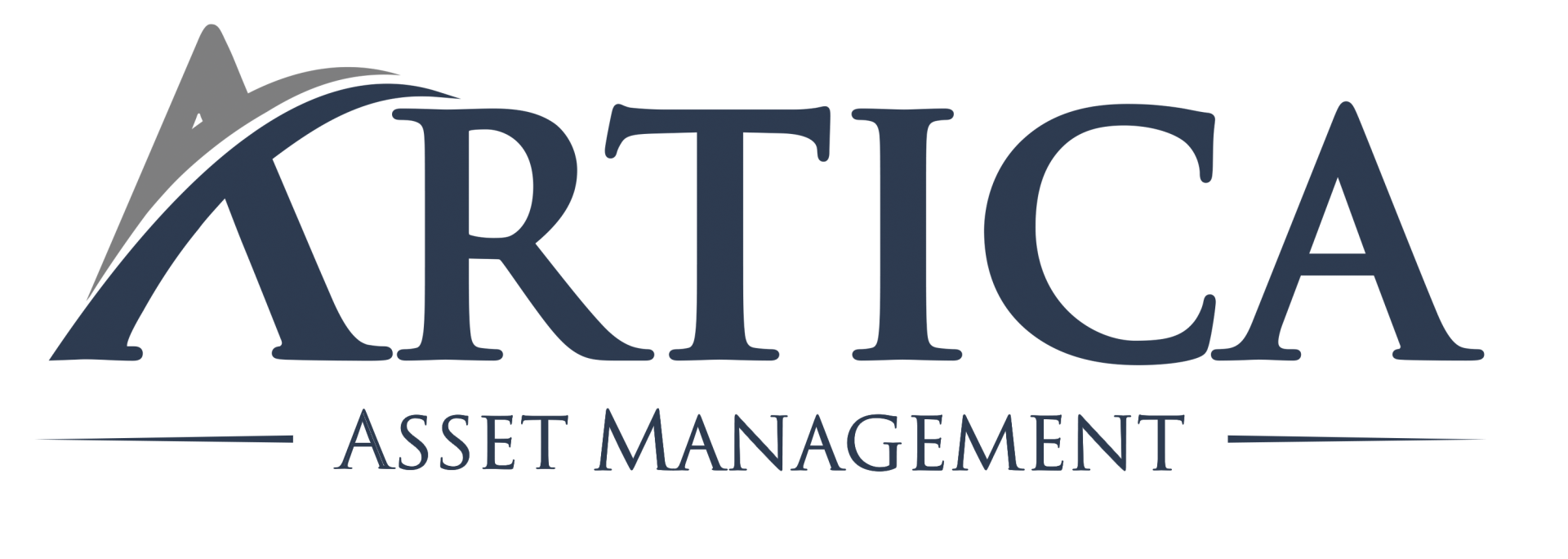Dear investors,
Being a good investor does not only require technical knowledge and dedication to analyzing opportunities, but also a certain temperament and psychological control that allow us to remain rational in whatever scenario we are facing.
Along these lines, we'd like to explore more about a topic we briefly mentioned in our last letter: cognitive biases. The subject is quite broad, so we selected three important biases to investment activity to present to you this time and we will return to the subject in future letters. We will talk about the biases of: social proof, extrapolation and confirmation.
What are cognitive biases
Our brains deal with complex analysis in an interesting way: we make shortcuts and mental models that simplify thinking and allow us to reach conclusions more quickly. This way of thinking, called heuristics, is quite efficient. In addition to avoiding the dysfunctional immobility that would be caused by trying to analyze each and every situation in detail, it leads us to correct conclusions in most cases. However, the heuristic has its limitations.
These simplifications happen in our mind involuntarily and unconsciously. Thus, where they fail, they chronically lead us to logical errors. These instinctive patterns that repeatedly lead us to wrong conclusions are what we call cognitive biases.
For investors, understanding cognitive biases serves two purposes: avoiding rationality failures in our own investment decisions and diagnosing when market movements are driven by biases present in a given situation.
The task is not easy. Dozens of biases have already been identified and categorized and, even understanding the mechanism of action of each one of them, applying them to real situations is not always trivial. There are cases where subtle errors have serious consequences. There are cases where several biases act simultaneously and make the situation more difficult to interpret.
On the other hand, the functioning of one's own mind is a topic that arouses interest in most people and studying it has always been quite pleasurable for us. We hope it is for you too.
The three biases we will explore in this letter were selected because they often influence investors and because they are relatively easy to understand, despite the topic itself being complicated in nature. Let's go to them.
Social proof bias
In a series of experiments conducted in the 1950s (Asch Conformity Experiments), researchers formed groups of 8 people and subjected them to a series of multiple-choice questions with obvious answers. For example, participants were asked to choose which of three bars drawn on a card was the same size as a fourth bar, with one of the bars clearly larger and one smaller than the fourth bar. The interesting detail is that 7 out of the 8 participants in each group were actors who answered before the 8th person. When the 7 actors all chose the same wrong answer, the 8th person had a 32% chance of also choosing the obviously wrong answer.
The bias is quite simple: we tend to act the way we see the people around us acting and believe what most say they believe. The primal impulse has its survival function: if you see a crowd running across a square, it's probably better to run in the same direction than to invoke your philosophical spirit and decide to stay behind to investigate the reason for the stampede.
Instinct is less useful for making good investment decisions and is one of the contributing factors to market excesses in both bubbles and busts. In bull market cycles, you see other people investing and making money from stocks that keep going up. So, you start to wonder if you shouldn't invest too, since everyone is doing it and you don't want to be left out. In times of crisis, the same logic is applied in reverse. You see everyone leaving the bag and you fear suffering alone by being left behind.
Social proof bias is especially influential on doubters. This makes investors, who tend to have more doubts than certainties, especially influential and inclined to seek confirmation or denial of their own ideas in the actions of other people. Added to this trend is the fact that expressing doubts publicly can be seen as a sign of weakness, causing people to speak out with a tone of certainty far greater than the actual confidence they have in their claims. Whoever is listening is supported by this demonstration of artificial certainty, gains some confidence and starts to repeat the same content in an assertive way, and thus the effect propagates to large numbers of people.
The ideal for an investor is to think independently, drawing his own conclusions based on his own analysis. However, this is an easy principle to understand and difficult to practice. To a large extent, it depends on the personality of each person: in the experiments we mentioned, 25% of the participants always chose the correct answer, without being swayed by the wrong answers of the actors. The remaining 75%, on at least one question, chose the obviously wrong answer.
extrapolation bias
The human mind is skilled at inductive reasoning: we recognize patterns in the world and assume they will keep repeating themselves. It's an excellent way to predict simple phenomena subject to constant natural laws: a stone thrown into the air will always return to the ground, copper will always be a good conductor of electricity and fire will always burn our hands. However, the inductive method is less effective for predicting the future of business, due to the complexity and number of variable factors involved.
Despite being inadequate in a series of situations, including investment analysis, we tend to continue reasoning inductively: we believe that a company that has been growing rapidly will continue to grow at the same speed, that the level of profitability of a business will remain the same. constant and that a stock that has been rising should continue its path. This is what we call extrapolation bias, one of the most present in an investor's daily life.
Note that the problem with this bias is not that it often leads to wrong conclusions, as the future is often in fact an extrapolation of the recent past. The problem is the unreliability of the inductive method, which is too simplistic and can lead to errors that would be avoidable through more comprehensive analyses. In investments, the cost of error is often very high, so it makes sense to put more effort into increasing the reliability of each thesis.
The recommendation to counteract this bias is to conduct deeper analyses, seeking to understand the factors that act behind each result: before judging that a company will continue to grow fast, it is worth understanding why the business grew at this pace in the past, how much space there is still on the market, how the competition has behaved, etc.
Even with all the diligence, predicting the future will always be a difficult task. It is important to remain aware that not all uncertainty can be reduced with further analysis. There are factors that will always be unpredictable and the best approach is to treat them as unknowns, while remaining aware of the risk they pose to the investment.
confirmation bias
Another symptom of our inductive nature is that we formulate initial theses based on our first observations and, from then on, we instinctively start paying more attention to what corroborates our first hypotheses. This behavior is called confirmation bias and affects us in three ways: i) when researching a topic, we tend to seek only information that confirms our pre-existing beliefs or hypotheses and do not look for contrary evidence; ii) in analyses, we tend to give greater value to data favorable to our theses and ignore inconsistent data; and iii) we memorize information selectively, remembering more easily what confirms what we want to prove.
All three forms usually manifest themselves during investment reviews: an investor sympathizes with a company, proceeds to research more reasons to consider it a good investment (and finds several, as there are always more public reports speaking well of companies than criticizing), unconsciously judges as more relevant the sets of data and analyzes that lead to positive conclusions and easily memorizes the main ideas and information that support the investment thesis.
The methodological problem caused by this bias is so counterintuitive that, at first glance, it may go unnoticed in the following statement: a hypothesis is true when there is evidence that confirms it.
The failure is to ignore possible contrary evidence, which may prove the hypothesis wrong. The antidote starts from a simple idea, which was one of the main contributions of the scientific method to the evolution of human thought: we must try to invalidate the hypothesis during the process employed to verify if it is correct. The ones that stand this test of falsification are the ones that are probably right.
The parallel is immediate in the context of investments: when analyzing opportunities, the focus should be on the search for possible problems in the company and flaws in the investment rationale. Theses that withstand the tests of falsification are the ones most likely to succeed.
Is there a cure?
Each person has a greater or lesser propensity to suffer certain biases, according to their temperament and personality. In our experience, it is possible to learn to identify your own biases, realize in which situations they exert the greatest influence, and train yourself to counteract them through discipline and methodological rigidity. However, there is no way to completely eliminate bias. They will always be present and require constant attention.
For those interested in reading more about the subject, we recommend the book Thinking Fast and Slow, by Daniel Kahneman, a pioneering researcher in the field of Behavioral Economics who coined the term “cognitive bias” and was awarded the Nobel Prize in economics for his contributions in the area. In this book, he says that even after decades of studying the subject, he also failed to completely eliminate his own biases.





